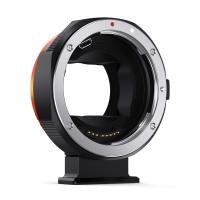What Can Transmission Electron Microscopes See ?
Transmission electron microscopes (TEMs) use a beam of electrons to create an image of a sample. They can see objects at a much higher resolution than light microscopes, allowing for the visualization of structures at the nanoscale level. TEMs can be used to observe the internal structure of cells, viruses, and bacteria, as well as the atomic structure of materials. They can also be used to study the properties of materials, such as their crystal structure, defects, and composition. In addition, TEMs can be used to analyze the chemical composition of a sample by using energy-dispersive X-ray spectroscopy (EDS) or electron energy loss spectroscopy (EELS). Overall, TEMs are a powerful tool for studying the structure and properties of materials and biological samples at the nanoscale level.
1、 Atomic structure
Transmission electron microscopes (TEMs) are powerful tools that can reveal the atomic structure of materials. TEMs use a beam of electrons to pass through a thin sample, and the electrons interact with the atoms in the sample to produce an image. The resolution of TEMs is much higher than that of light microscopes, allowing scientists to see individual atoms and their arrangement in a material.
TEMs can see the atomic structure of a wide range of materials, including metals, ceramics, polymers, and biological samples. They can reveal the crystal structure of a material, which is important for understanding its properties and behavior. TEMs can also show defects in the crystal structure, such as dislocations, vacancies, and grain boundaries, which can affect the material's mechanical, electrical, and optical properties.
In recent years, TEMs have been used to study materials at the nanoscale, where the properties of materials can be very different from those at larger scales. TEMs can reveal the size, shape, and distribution of nanoparticles, which are important for applications in fields such as catalysis, electronics, and medicine. TEMs can also show the interactions between nanoparticles and other materials, such as proteins or cells, which is important for understanding their biological effects.
Overall, TEMs are powerful tools for studying the atomic structure of materials, and they continue to be used to explore new materials and applications. The latest point of view is that TEMs are becoming more advanced and sophisticated, allowing scientists to study materials with higher resolution and sensitivity, and to explore new applications in fields such as energy, environment, and medicine.

2、 Crystal defects
Transmission electron microscopes (TEMs) are powerful tools that can reveal the atomic structure of materials with high resolution. They use a beam of electrons to pass through a thin sample, and the resulting image can provide information about the sample's crystal structure, defects, and composition.
Crystal defects are one of the key features that TEMs can reveal. These defects can occur during the growth or processing of a crystal, and they can have a significant impact on the material's properties. TEMs can detect a range of defects, including point defects (such as vacancies and interstitials), line defects (such as dislocations), and planar defects (such as grain boundaries and stacking faults).
Recent advances in TEM technology have enabled even more detailed analysis of crystal defects. For example, aberration-corrected TEMs can provide atomic-scale resolution, allowing researchers to directly observe the arrangement of atoms around defects. In addition, in-situ TEM techniques can be used to study the behavior of defects under different conditions, such as temperature or stress.
Overall, TEMs are powerful tools for studying crystal defects and their impact on material properties. As technology continues to advance, TEMs will likely play an increasingly important role in materials science research.

3、 Nanoparticles
Transmission electron microscopes (TEMs) are powerful tools that can see objects at the nanoscale level. They use a beam of electrons to create an image of the sample, allowing researchers to see the structure and composition of materials in great detail.
Nanoparticles, which are particles with dimensions between 1 and 100 nanometers, can be imaged using TEMs. These particles are often used in various applications, such as drug delivery, electronics, and energy storage. TEMs can provide information about the size, shape, and distribution of nanoparticles, as well as their crystal structure and chemical composition.
Recent advancements in TEM technology have allowed for even higher resolution imaging of nanoparticles. For example, aberration-corrected TEMs can provide atomic-scale resolution, allowing researchers to see individual atoms within a nanoparticle. This level of detail can provide insights into the properties and behavior of nanoparticles, which can be useful for designing new materials and improving existing ones.
In addition to imaging, TEMs can also be used for other types of analysis, such as electron diffraction and spectroscopy. These techniques can provide information about the crystal structure and chemical composition of nanoparticles, respectively.
Overall, TEMs are powerful tools for studying nanoparticles and can provide valuable insights into their properties and behavior. As technology continues to advance, we can expect even more detailed and precise imaging of nanoparticles using TEMs.

4、 Biological molecules
Transmission electron microscopes (TEMs) are powerful tools that can see biological molecules at the nanoscale level. TEMs use a beam of electrons to pass through a thin sample, which is then projected onto a screen or detector to create an image. This allows scientists to see the structure and organization of biological molecules, such as proteins, DNA, and viruses, in great detail.
TEMs have been used to study the structure of biological molecules for decades, and have contributed greatly to our understanding of the molecular basis of life. For example, TEMs have been used to study the structure of viruses, which are too small to be seen with a light microscope. This has led to the development of vaccines and antiviral drugs that target specific viral proteins.
In recent years, advances in TEM technology have allowed scientists to see biological molecules in even greater detail. For example, cryo-electron microscopy (cryo-EM) is a technique that allows samples to be imaged at very low temperatures, which helps to preserve their structure. This has led to the discovery of new protein structures and has helped to advance our understanding of how proteins function in the body.
Overall, TEMs are powerful tools that can see biological molecules at the nanoscale level, and have contributed greatly to our understanding of the molecular basis of life. With continued advances in technology, TEMs will continue to play an important role in biological research.































There are no comments for this blog.